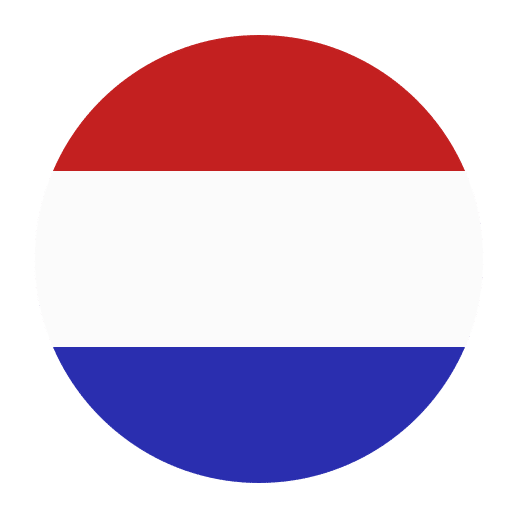Learning a new language is an exciting and rewarding journey, but it is also one that requires dedication and consistency. Dutch, with its unique sounds and structures, presents its own set of challenges for English speakers. However, with the right strategies, staying consistent in your Dutch language practice can become a manageable and even enjoyable part of your daily routine. This article will provide you with comprehensive tips and techniques to help you stay on track with your Dutch learning goals.
Set Clear and Achievable Goals
One of the most effective ways to maintain consistency in your Dutch language practice is to set clear and achievable goals. Having a sense of direction and purpose can keep you motivated and focused.
Short-term and Long-term Goals
Divide your goals into short-term and long-term objectives. Short-term goals could include learning a set number of new words each week, completing a lesson in your language app daily, or practicing speaking for 10 minutes every day. Long-term goals might be more ambitious, such as holding a conversation with a native speaker, passing a language proficiency test, or traveling to the Netherlands and using Dutch in real-life situations.
SMART Goals
Make sure your goals are SMART: Specific, Measurable, Achievable, Relevant, and Time-bound. For example, instead of saying “I want to get better at Dutch,” a SMART goal would be, “I will learn and use 50 new Dutch words by the end of this month.”
Incorporate Dutch into Your Daily Routine
Consistency is easier to maintain when language practice becomes a part of your daily routine. Here are some ways to seamlessly integrate Dutch into your everyday life.
Language Apps and Online Resources
There are numerous apps and online resources designed to make language learning accessible and fun. Apps like Duolingo, Babbel, and Memrise offer structured lessons and practice activities that you can fit into your schedule. Even just 10-15 minutes a day can make a significant difference over time.
Daily Vocabulary Practice
Use flashcards or apps like Anki to review new vocabulary daily. Consistent exposure to new words and phrases helps reinforce your memory and improve your recall. Try to learn and use a set number of new words each day.
Media Consumption
Incorporate Dutch media into your daily routine. Listen to Dutch music, watch Dutch movies or TV shows, and follow Dutch news outlets. This not only improves your listening skills but also helps you get a feel for the natural rhythm and intonation of the language.
Labeling Everyday Items
Label common items in your home with their Dutch names. For example, place a sticker that says “de koelkast” on your refrigerator or “de spiegel” on your mirror. This constant visual reminder reinforces vocabulary in a practical context.
Engage with the Dutch-speaking Community
Practicing with native speakers or other learners can provide valuable feedback and motivation.
Language Exchange Partners
Find a language exchange partner who is a native Dutch speaker learning English. You can help each other by practicing speaking and correcting each other’s mistakes. Websites like Tandem, HelloTalk, and ConversationExchange can help you find a suitable partner.
Join Dutch Language Groups
Look for local or online Dutch language groups or clubs. These groups often organize meetups, conversation practice sessions, and cultural events. Participating in such activities can provide a sense of community and accountability.
Online Communities and Forums
Join online forums and social media groups dedicated to Dutch language learners. Websites like Reddit have communities (such as r/learnDutch) where you can ask questions, share resources, and get support from fellow learners.
Make Learning Fun and Enjoyable
When learning feels like a chore, it’s easy to lose motivation. Incorporate fun and enjoyable activities to keep your interest alive.
Games and Puzzles
Use language learning games and puzzles to make practice enjoyable. Apps like Drops and Clozemaster turn vocabulary learning into a game. Crossword puzzles and word searches in Dutch can also be a fun way to reinforce your language skills.
Cooking with Dutch Recipes
Find Dutch recipes and try cooking them. This not only helps you learn new vocabulary related to food and cooking but also gives you a taste of Dutch culture. Websites like “Albert Heijn” (a popular Dutch supermarket) often have recipes in Dutch.
Reading for Pleasure
Read books, comics, or articles in Dutch that interest you. Start with simpler texts like children’s books or graded readers and gradually move on to more complex materials. The key is to choose content that you enjoy, which will keep you engaged and motivated.
Track Your Progress
Keeping track of your progress can provide a sense of accomplishment and motivate you to keep going.
Language Learning Journals
Maintain a journal where you record new words, phrases, and grammar rules you learn. Write about your daily experiences or thoughts in Dutch. Over time, you’ll be able to see how much you’ve improved.
Regular Self-assessment
Periodically test yourself to assess your progress. Use language proficiency tests, quizzes, or practice exams to gauge your level. This can help you identify areas that need more focus and adjust your learning plan accordingly.
Celebrate Milestones
Celebrate your achievements, no matter how small. Whether it’s mastering a challenging grammar concept, completing a language course, or having your first conversation in Dutch, take the time to acknowledge and reward yourself for your hard work.
Stay Motivated and Positive
Maintaining a positive attitude and finding ways to stay motivated are crucial for long-term consistency.
Set a Routine and Stick to It
Establish a regular study schedule and stick to it. Consistency is key in language learning. Even on days when you’re busy or not in the mood, try to do at least a small amount of practice to keep the momentum going.
Find Your “Why”
Remind yourself why you wanted to learn Dutch in the first place. Whether it’s for travel, work, connecting with family, or personal enrichment, keeping your ultimate goal in mind can help you stay motivated during challenging times.
Stay Positive and Patient
Language learning is a marathon, not a sprint. There will be times when progress feels slow or when you hit a plateau. Stay positive and be patient with yourself. Celebrate your progress and remember that every step forward, no matter how small, is a victory.
Utilize Technology to Your Advantage
Modern technology offers a plethora of tools that can enhance your language learning experience.
Language Learning Apps
Leverage apps like Rosetta Stone, Pimsleur, and Babbel, which offer structured lessons that cater to different learning styles. These apps often include interactive exercises, pronunciation practice, and cultural insights.
Voice Assistants and Smart Devices
Use voice assistants like Google Assistant or Amazon Alexa to practice Dutch. You can ask them to translate phrases, set reminders in Dutch, or even hold simple conversations.
Online Courses and Tutors
Enroll in online courses or find a tutor on platforms like iTalki or Preply. A structured course or personalized tutoring can provide guidance and accountability, helping you stay consistent with your practice.
Immerse Yourself in the Language
Immersion is one of the most effective ways to learn a language. Surround yourself with Dutch as much as possible.
Travel to Dutch-speaking Regions
If possible, travel to the Netherlands or other Dutch-speaking regions. Immersing yourself in the language and culture can provide practical experience and boost your confidence.
Host Language Immersion Days
Dedicate certain days to full immersion. Speak, read, and write only in Dutch for the entire day. This can be challenging but immensely rewarding, as it forces you to think and function in the language.
Virtual Immersion
Even if you can’t travel, you can create a virtual immersion environment. Follow Dutch influencers on social media, participate in Dutch webinars or online events, and connect with Dutch speakers through video calls.
Balance Structured Learning with Free Practice
A balanced approach combining structured learning with free practice can enhance your language skills.
Structured Learning
Engage in structured learning through language courses, textbooks, and grammar exercises. This provides a solid foundation and helps you understand the rules and structures of the language.
Free Practice
Complement structured learning with free practice. Engage in conversations, write essays or diary entries, and practice listening and speaking in real-life scenarios. This helps you apply what you’ve learned and develop fluency.
Seek Feedback and Reflect on Your Learning
Feedback and reflection are essential for improvement and growth.
Constructive Feedback
Seek feedback from native speakers, language exchange partners, or tutors. Constructive feedback helps you identify mistakes and areas for improvement. Don’t be afraid to make errors; they are a natural part of the learning process.
Reflect on Your Learning
Regularly reflect on your learning journey. Assess what methods are working for you and what needs adjustment. Reflecting on your progress and challenges helps you stay mindful and proactive in your learning.
Stay Consistent with Dutch Language Practice
Consistency is the cornerstone of successful language learning. By setting clear goals, incorporating Dutch into your daily routine, engaging with the community, making learning enjoyable, tracking your progress, staying motivated, utilizing technology, immersing yourself in the language, balancing structured learning with free practice, and seeking feedback, you can stay consistent and make steady progress in your Dutch language journey. Remember, every small effort counts, and with perseverance and dedication, you will achieve your language learning goals.

